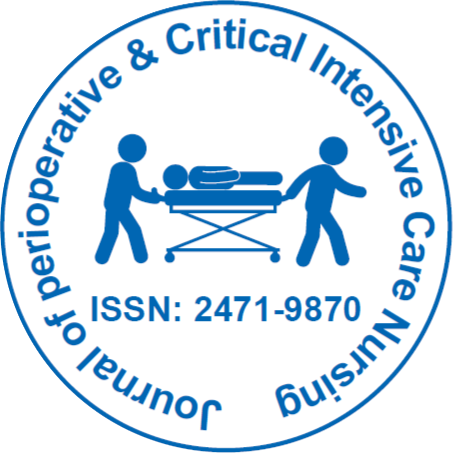
Journal of Perioperative & Critical Intensive Care Nursing
Open Access
ISSN: 2471-9870

ISSN: 2471-9870
Commentary - (2022)Volume 8, Issue 1
The branch of medicine known as emergency medicine deals with the treatment of undifferentiated, unexpected patients who have injuries or severe diseases that require prompt medical attention. In order to resuscitate and stabilize patients, emergency room doctors perform immediate investigations and operations, but they hardly ever provide ongoing or long-term care. Emergency doctors mostly work in critical care units, prehospital environments offered by emergency medical services, and hospital emergency rooms. Any illness that a reasonable layman, or someone acting on their behalf, feels needs immediate medical or surgical diagnosis and treatment is an emergency. To identify, treat, and manage patients who have had an unexpected accident or illness is the fundamental purpose of emergency medicine.
The knowledge and skills required for prevention, diagnosis, and treatment of the acute and urgent aspects of illness and injury that affect patients of all ages with a wide range of generalized physical and behavioral abnormalities are the cornerstones of the practice of emergency medicine. In this area of expertise, effective time management is crucial. The following areas have seen the introduction of new duties as emergency medicine has grown,
• Management of administrative and medical components of the emergency services system.
• The planning and management of both natural and man-made disasters.
• Expansion of toxicology and poison centers.
• Education of patients, medical professionals, students, and general public.
• Fighting disease.
• Basic and clinical research, notably on resuscitation and emergency treatments.
Hospital emergency
An Emergency Department (ED), often known as an Accident and Emergency Department (A&E), Emergency Room (ER), Emergency Ward (EW), is a type of medical care institution that specializes in emergency medicine. Acute treatment is provided in an ED for patients who arrive without an appointment, either on their own initiative or through ambulance. Usually, a hospital or another sort of primary care institution houses the emergency room. People who have suffered serious injuries or unanticipated diseases are sent to an emergency room or similar hospital department for immediate care. The emergency department is one of the settings where diagnostic mistakes happen most frequently, and both their frequency and severity are significant.
One of the most important medical safety concerns that have to be addressed is diagnostic errors. This is because working in an emergency room requires multitasking, dealing with frequent interruptions, and acting quickly while dealing with patients who are undiagnosed and are experiencing their first emergency. According to dual process theory, when making clinical judgments, we engaged both System 1-which is intuitive, heuristic, unconscious and System 2-which is analytical and logical conscious thinking. The phenomenon known as cognitive bias makes people more likely to think in ways that lead to poor decision-making. In an emergency department, System 1, which is prone to cognitive biases, is commonly used to diagnose patients.
Despite the fact that cognitive biases are common and unrelated to knowledge, most people find it difficult to identify their own cognitive biases. In fact, prior studies have revealed that diagnostic errors impact 0.6% to 12% of patients who seek emergency department care, and that 96% of these circumstances contain one or more cognitive components. 43 patients who required endotracheal intubation in an emergency room were prospectively studied to detect intubation-related challenges, evaluate patient survival, and evaluate emergency department policy. 22 patients required intubation due to Acute Respiratory Failure (ARF), while 21 patients required intubation due to Cardio Pulmonary Arrest (CPA). The 43 people, 24 of whom had 38 issues, were affected. The incubator's department and degree of training had no impact on issue rate. The survival rate was unaffected by specific issues as well. The ARF group included each of the 17 patients who made it out alive. A greater survival rate was also associated with being older than 40 and having an admission PaO2 over 40 mm Hg.
Citation: Watson A (2022) System for Emergency Medicine and Emergency Room Management. J Perioper Crit Intensive Care Nurs. 8:193.
Received: 07-Mar-2022, Manuscript No. JPCIC-22-20457; Editor assigned: 09-Mar-2022, Pre QC No. JPCIC-22-20457 (PQ); Reviewed: 24-Mar-2022, QC No. JPCIC-22-20457; Revised: 30-Mar-2022, Manuscript No. JPCIC-22-20457 (R); Published: 08-Apr-2022 , DOI: 10.35248/2471-9870.22.8.193
Copyright: © 2022 Watson A. This is an open-access article distributed under the terms of the Creative Commons Attribution License, which permits unrestricted use, distribution, and reproduction in any medium, provided the original author and source are credited.